Understanding your audience isn’t just a good practice; it’s the bedrock of writing sales copy that resonates and converts.
If you dive deep into who your customers are, what drives them, and what their chronic pain points are, you’re opening up a treasure chest of insights.
Imagine standing in front of an audience that nods along, fully engaged—not because you’re throwing jargon at them, but because you’re speaking directly to their needs and desires.
It’s like finding that perfect gift that feels tailor-made, and trust me, that’s an electrifying experience for your readers!
Studies show that 63% of online shoppers expect businesses to comprehend their needs and respond aptly.
If you can zero in on those expectations, you set yourself apart from the competition.
Understanding your audience helps you refine your messaging to tackle their objections, tap into their passions, and pull on those heartstrings—all critical elements in steering your sales copy toward irresistible engagement.
Now, what’s the secret sauce, you might ask? It’s all about creating robust customer personas that connect on a meaningful level.
Think of personas as that multicolored prism reflecting the diversity in your audience.
By piecing together details like demographics, psychographics, and purchasing habits, you’re weaving a narrative that makes your copy not only relatable but also magnetic.
According to MarketingProfs, businesses with well-documented personas outperform those that don’t by a staggering 77%! So why not harness that potential and bring authenticity back into your messaging?
Finally, the magic wand in this journey is empathy.
By stepping into your customers’ shoes, you create bonds that go beyond mere transactions.
Empathy isn’t a buzzword—it’s a genuine connection.
Use language that resonates, share stories that mirror their lives, and address their emotional triggers.
Whether it’s joy, relief, or even frustration, tapping into these emotions can transform casual readers into devoted customers.
In this blog post, we’ll dive into each of these elements and uncover actionable strategies that will help you master the art of understanding your audience, leading to sales copy that not only dazzles but delivers results!
Understanding Your Audience: The Key to Success

Grasping the nuances of your audience is an absolute game changer when it comes to writing sales copy that sizzles.
Think about it—if you understand who they are, their desires, and their pain points, you can tailor your message to hit that sweet spot.
It’s kind of like having a secret key that unlocks the door to connecting with your customers on a deeper level.
When your audience feels understood, they don’t just read your copy; they feel it, and they’re drawn towards engaging with it!
In your quest to write sales copy that drives more clicks and revenue, investing time in understanding your audience will yield major dividends.
From pinpointing their objections to tapping into their motivations, each insight allows you to craft a message that resonates and inspires action.
Grab your magnifying glass and let’s dive into the art of understanding your audience!
Identifying Customer Pain Points
Identifying customer pain points is like being a detective in a mystery novel—you’re piecing together clues to truly understand what your audience struggles with.
A fantastic way to start is by gathering feedback.
Surveys, customer reviews, and even monitoring social media conversations can provide a treasure trove of information.
According to a study by HubSpot, 63% of customers expect businesses to understand their needs and expectations, so you want to be that business!
Here’s a quick list to help you identify common customer pain points:
- Lack of Time: Busy lives lead to a need for quick, effective solutions.
- High Costs: Customers want to know they’re getting value for their money.
- Complex Processes: Simplified communication is crucial to ease their concerns.
- Fear of Change: Many individuals are hesitant to switch to a new product or service.
By honing in on these issues, you can tailor your sales copy to address and alleviate these pain points, making your product or service seem like the ultimate solution.
Imagine the impact of addressing these points directly—a reader might feel that exhilarating rush as they realize, “Wow, they really get me!”
Crafting Personas That Connect
Creating detailed customer personas is like bringing your ideal reader to life! These personas encapsulate demographics like age, gender, job title, and even their purchasing behaviors.
According to MarketingProfs, businesses with documented personas outperform those without them by 77%. That’s a statistic that simply cannot be ignored!
To create effective personas, consider the following aspects:
- Demographic Information: Age, gender, income level, education, and geographic location.
- Psychographic Characteristics: Interests, values, lifestyle, and attitudes.
- Challenges and Goals: What obstacles do they face, and what are their aspirations?
- Buying Habits: Where do they shop? Are they bargain hunters, or do they splurge?
You can also add a sprinkle of empathy to these personas.
Picture your audience living their daily lives—what frustrations are they juggling? This strategy not only shapes your content but makes it infinitely relatable.
Trust me, once your personas start to solidify, you’ll find inspiration flowing like a waterfall!
Using Empathy to Drive Your Message
It’s essential to step into the shoes of your audience and see the world through their eyes.
This strategy paves the way for messages that are deeply engaging and human; it helps you tap into the emotions that drive decisions.
To infuse empathy into your written communication, you might consider:
- Using Language That Resonates: Employ words that mirror your audience’s language. If your audience is composed of millennial entrepreneurs, don’t shy away from a casual, conversational tone.
- Sharing Relatable Stories: Personal anecdotes or case studies can show that you truly understand the challenges your readers face. This cultivates a sense of belonging and trust.
- Addressing Emotions: Dig deep into the emotional triggers that may lead to a purchase. Is it fear, joy, or relief? Articulating these emotions can tap into the psyche of your readers.
Empathy isn’t just about feeling; it’s about connecting.
An empathetic message speaks to the heart, prompting reactions that might just lead to conversions.
So, if you’re not already employing empathy in your sales copy, let’s make that happen!
The Art of Attention-Grabbing Headlines
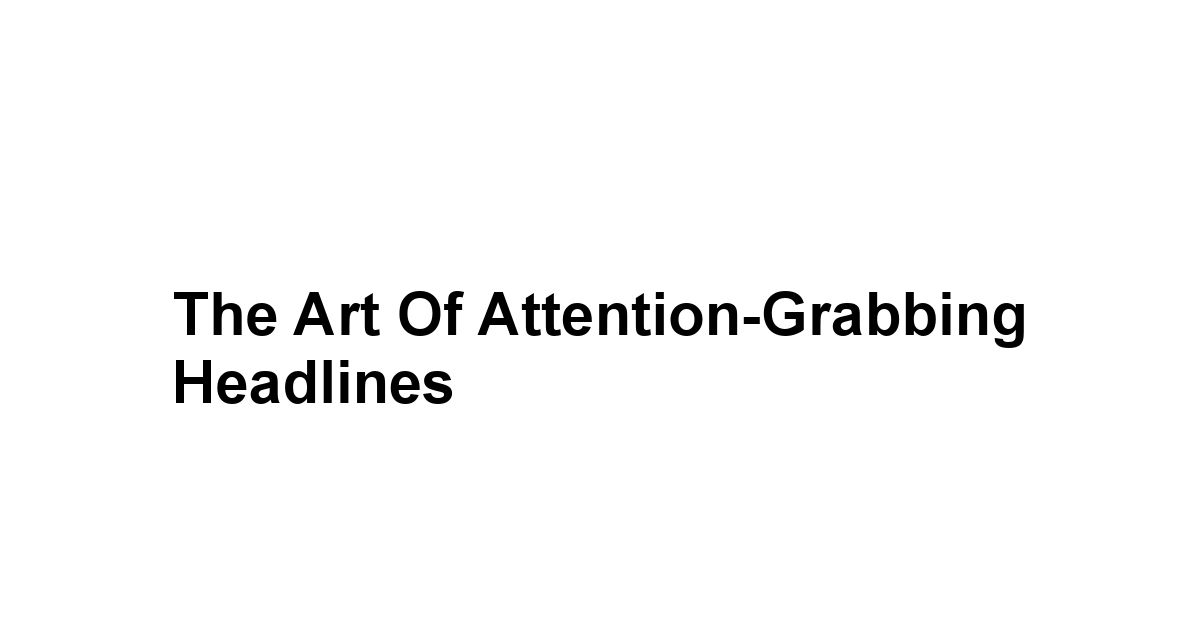
Headlines are crucial and can literally make or break your sales copy.
Research shows that 80% of readers never make it past the headline, so if yours doesn’t dazzle, you might as well be tossing your sales copy into the void.
Invoking curiosity, presenting benefits upfront, and tickling the reader’s imagination are all techniques to create that winning headline.
With some fine-tuning, you can elevate your headlines to become irresistible magnets for your audience!
Techniques for Captivating Your Reader
Now let’s break down some tried-and-true techniques to craft stunning headlines that capture attention!
-
Use Strong, Actionable Verbs: Energize your headlines by starting them with powerful verbs. Instead of saying, “Tips for Writing Sales Copy,” try “Unlock Sales Success with These Game-Changing Copywriting Tips!”
-
Make It Personal: Including the word “You” in a headline makes it more direct and engaging. For instance, “Transform Your Sales with Simple Copy Techniques” strikes a warm chord.
-
Encourage Curiosity: Teasers are excellent bait for generating interest. A headline like “Discover the Secret Formula for High-Converting Copy” can draw readers in like moths to a flame.
-
Add a Sense of Urgency: Utilizing phrases such as “limited-time offer” or “Act Now!” prompts readers to take immediate action.
Experiment with these techniques, and don’t hesitate to keep iterating until your headlines shine brighter than all the stars in the galaxy!
How to Use Numbers for Impact
Numbers pack a punch in writing! Including them in your headlines can give your content an edge, making it more concrete and credible.
According to a study by Copyblogger, headlines with numbers tend to get shared more than those that don’t.
Crazy, right? It’s like a secret weapon in your copywriting toolkit!
Here’s how to effectively use numbers in your headlines:
- Listicles Are Gold: Titles such as “7 Surefire Strategies to Boost Your Sales” capture attention, as readers are often drawn to digestible formats.
- Statistical Impact: If you can back it up with data, do it! Using a headline like “80% of Consumers Prefer Personalization in Marketing Efforts” presents an engaging fact that readers won’t want to miss.
- Simple Comparisons: “5 Ways to Compare Marketing Channels” can be eye-catching and informative at the same time!
By embracing this technique, your sales copy will not only stand out but also appear more trustworthy and authoritative.
Numbers help lend clarity and convey key points efficiently—so don’t shy away from giving them center stage!
The Power of Curiosity in Your Titles
Curiosity is a natural human impulse, and powerful headlines leverage this to encourage readers to explore more.
When you spark curiosity, you’re opening a door to a world of possibilities where a reader is more likely to click through and absorb your message.
Here’s how you can weave in that curiosity factor:
- Use Intriguing Language: Terms like “Unveiled,” “Revealed,” and “Exposed” can create a compelling narrative that captivates attention.
- Pose Engaging Questions: Questions are like bait that prompts curiosity—“Are You Making These Sales Copy Mistakes?” opens the door for exploration and discovery.
- Create Mystery: Use hints and teasers in your headlines without giving away everything. “This One Trick Will Change Your Sales!” piques enough interest for a reader to want to learn more.
By harnessing curiosity in your headlines, you’re not just writing; you’re crafting mini-stories that entice the audience and beckon them into the experience you’ve created.
Get ready to see those clicks rise as readers can’t resist the urge to discover what lies beyond the title!
Creating Compelling Offers That Spark Interest
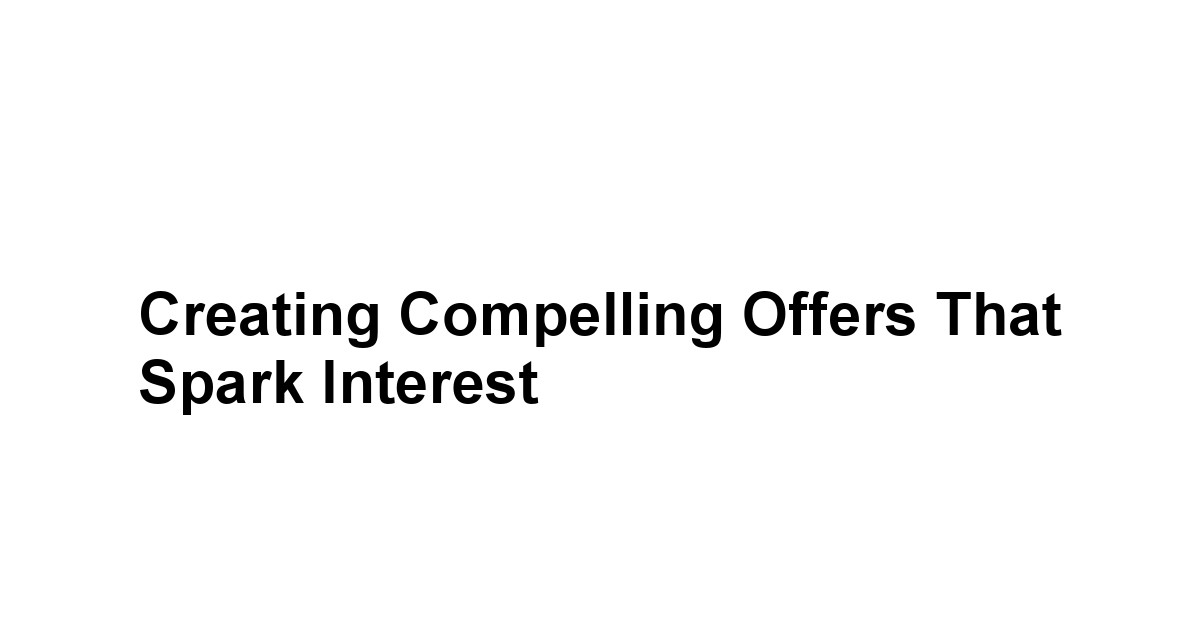
When it comes to crafting offers, it’s not just about throwing something out there and hoping it sticks.
Instead, it’s crucial to create offers that consumers can’t resist! Your offer should be like that shiny golden ticket in a sea of mundane choices—something that practically demands attention and action.
Did you know, according to a study by the Nielsen Norman Group, users typically spend only 10-20 seconds on a webpage? That’s a short window to grab their attention and compel them to take action! So let’s dive deeper into how to create those irresistible offers that truly inspire engagement and conversions.
Highlighting Unique Selling Propositions
Your Unique Selling Proposition USP is what sets you apart from the competition.
It’s the secret sauce of your offer and highlights why your product or service is the only logical choice.
Essentially, your USP should answer the burning question: “Why should I choose you?”
Here’s how to effectively highlight your USP:
-
Identify What Makes You Different: This could be exceptional customer service, superior quality, or an innovative product feature. Do a quick competitor analysis to see what you can capitalize on.
-
Make It Clear and Concise: A straightforward statement that summarizes your USP will stick in readers’ minds. For instance, “Our eco-friendly packaging means you’re saving the planet with every purchase.”
-
Incorporate Testimonials: Real testimonials can bolster your USP. If customers vocally agree, it adds credibility! Feature glowing reviews that speak directly to your unique benefits.
Finding and effectively communicating your USP can turn a standard offer into a goldmine of opportunity.
Don’t miss out on this chance to shine bright in your niche—let your audience know exactly what makes you special!
Leveraging Scarcity and Urgency
Want to see a surge in desired actions? Scarcity and urgency can lead readers to act before they have the chance to talk themselves out of it.
When consumers are aware that products or deals are available in limited quantities or only for a limited time, they tend to act faster.
Consider these strategies to incorporate scarcity and urgency into your offers:
- Limited-Time Offers: Phrases like “72-Hour Flash Sale” or “Offer Ends Soon!” create urgency and push readers towards quick decisions.
- Showcase Availability: Display the number of items left in stock or how many spots are available—like “Only 5 Left!”—to invoke a sense of scarcity.
Did you know that creating urgency can increase sales conversions substantially? A study by DigitalMarketer found that urgency increases conversions by up to 332%! This is solid proof that urgency and scarcity are not just marketing tactics; they are powerful motivators.
Structuring Your Offers for Maximum Appeal
The structure of your offer is equally as important as what’s inside it.
Readers are more likely to engage with an offer that’s easy to digest and visually attractive.
Structure plays a crucial role in conveying the value of your offer.
Here are some quick recommendations for structuring your offers:
-
Create a Compelling Headline: Start with an attention-grabbing headline that encapsulates the offer’s essence.
-
Break Down Benefits: Use bullet points or short paragraphs to clearly convey the benefits of your offer. Keep the language simple to maintain engagement.
-
Visuals Matter: Integrate eye-catching visuals or infographics that illustrate your offer. Research indicates that visuals can boost engagement by up to 94%.
When you integrate effective structure, your offers will transform from a jumbled mess of words into compelling reads that users want to click on immediately.
The pathway to irresistible offers is paved with clarity and excitement!
Writing Powerful Introductions That Hook Readers
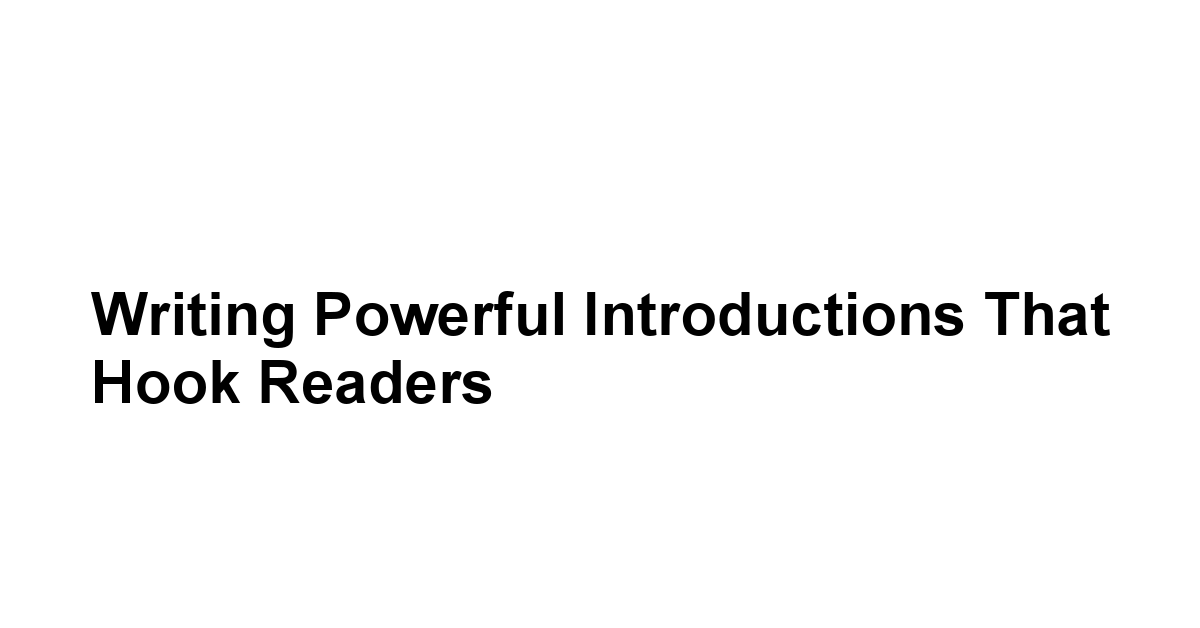
You know what they say: You never get a second chance to make a first impression! In sales copy, your introduction serves as that critical first impression that can either captivate your audience or send them on a scrolling spree.
This is your moment to shine and pull readers into the rich experience of your content!
A powerful introduction can set the tone for the rest of your sales copy.
When readers feel an instant connection, they become more willing to engage and ultimately, convert.
It’s all about creating drama, excitement, and anticipation—as if you’re inviting your audience on a thrilling adventure!
The Importance of Setting the Tone
Setting the tone in your introductory paragraph establishes the framework for the entire piece.
You want to relate to your audience, engage their curiosity, and create anticipation that drives them to keep reading.
To set the right tone, consider these strategies:
-
Identify Your Audience: Understand your audience’s mindset. Are they young professionals looking for motivational inspiration, or are they seasoned executives after straightforward facts?
-
Utilize Inviting Language: Use a conversational tone infused with warmth. Inviting readers in creates a welcoming space without overwhelming them.
-
Employ Engaging Narratives: Sharing a relatable story or anecdote can humanize your content. For example, beginning with a cosmic analogy about stars falling can be quite effective for a narrative-driven sales copy.
Setting the tone effectively will allow readers to feel like they’re engaged in a conversation rather than being subjected to hard-selling tactics.
A captured audience is a loyal audience—so let’s make every word count!
Techniques for Strong Opening Lines
Your opening lines are crucial for grabbing attention.
They should be powerful and thought-provoking enough to hook readers and keep them interested.
Here are a few techniques you can use for strong opening lines:
-
Start with a Provocative Statement: Something like “Did you know that 80% of consumers abandon their carts before finalizing a purchase?” compels readers to contemplate and dig deeper into your content.
-
Ask a Compelling Question: A question such as “Have you ever thought about what’s truly holding your sales back?” invites readers to ponder and connects your copy to their personal experiences.
-
Use Intriguing Facts or Statistics: A surprising statistic can act as a strong opener. For instance, “Only 3% of visitors convert on an average e-commerce site” grabs attention and sets a significant backdrop to your sales copy.
Remember, these opening techniques need to resonate with your audience and prime them for the value that follows.
You want the readers to lean in closer, eager for what comes next!
Engaging with Questions to Draw Readers In
Questions are like secret keys to your reader’s curiosity—I mean, who doesn’t love a good question? In your sales copy, engaging with questions can draw readers in and encourage them to keep reading.
Consider these approaches to utilize questions effectively:
-
Rhetorical Questions: Use them to encourage readers to reflect on their current situations. “Are you tired of lackluster marketing results?” can prompt self-evaluation.
-
Problem-Solution Questions: Frame a question that aligns with a challenge they are facing. “Wish you could double your sales in just one month?” directs your audience toward a solution frame.
-
Descriptive Questions: Invite readers to imagine a scenario. “Picture a day when your customer inquiries far exceed your highest expectations.” It builds excitement and sets the stage for engagement.
Asking questions throughout your sales copy can create a type of conversation, making readers feel like they’re part of a dialogue rather than passive observers.
When they feel engaged, they’re far more likely to take action!
Crafting Persuasive Body Copy That Resonates
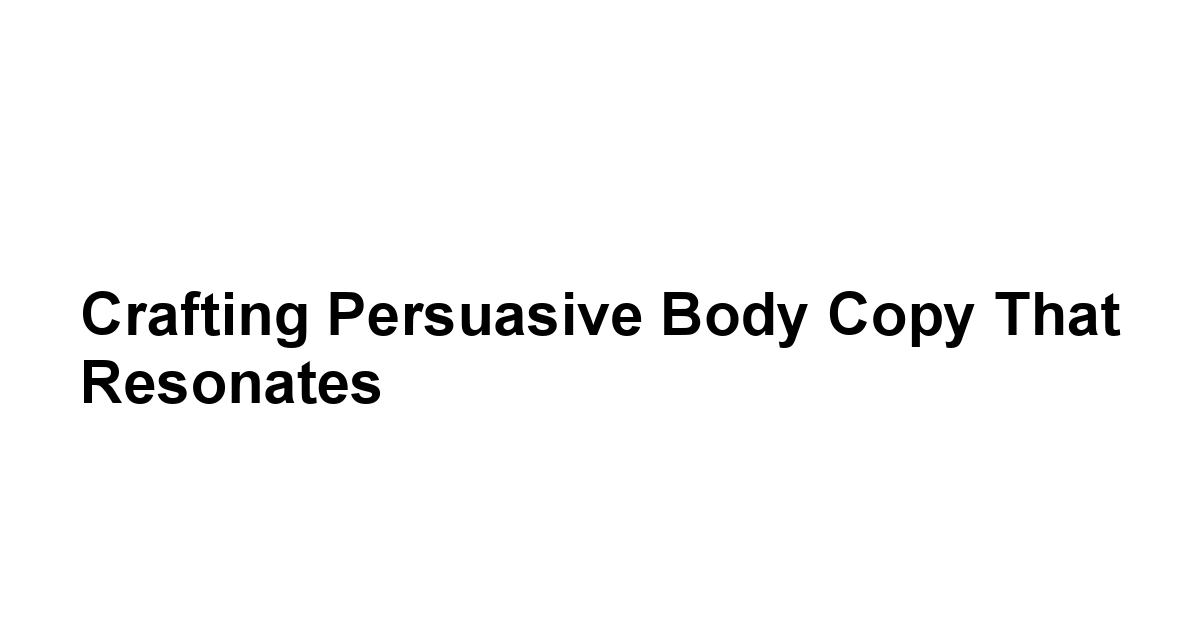
The body of your sales copy is where the real magic happens.
This is your chance to dive deep, connect emotionally, and showcase the compelling benefits of your product or service.
Thoughtful, persuasive body copy has the potential to sway hearts and minds, leading readers to eagerly reach for that “buy” button!
Creating resonant body copy is about more than just slapping words together; it’s an art form, and a lot hinges on storytelling, language choice, and highlighting the benefits your audience craves.
Storytelling: Making Your Message Relatable
Storytelling is arguably one of the most powerful tools in your copywriting arsenal.
When you weave a compelling narrative, you’re inviting your readers to step into your shoes and share a vivid experience with you.
It’s an invitation to explore emotions, challenges, and triumphs that echo their own lives!
To leverage storytelling in your sales copy, consider these points:
-
Identify a Character: Create a relatable protagonist—a customer or user—that represents aspects of your audience. It’s a way to mirror and tap into their experiences.
-
Establish Conflict or Challenges: Every good story has a conflict. Outline a struggle that mirrors your readers’ pain points. “Emma was on the brink of giving up on her business due to stagnant sales…”
-
Demonstrate Resolution: Show how your product or service turns things around. “But when she discovered our unique strategies, everything changed! Just like Emma, you too can find success!”
Storytelling satiates the human desire for connection.
It humanizes your brand, builds trust, and cultivates an emotional tie that can lead to excitement about your offerings!
Using Clear and Conversational Language
Using clear and conversational language in your body copy makes all the difference.
It invites readers in, creating a friendly and relatable tone that fosters connection.
When readers can easily digest your copy, they’re more likely to engage with it and take action.
Here are some techniques for achieving a clear and conversational tone:
-
Use Short Sentences and Simple Words: Eliminate jargon and make your content accessible. Instead of saying “Utilize our services,” go with “Use our services” to keep things fresh and friendly.
-
Write Like You’re Talking: Imagine explaining your product to a friend. Use informal, friendly language to create a welcoming atmosphere. “Imagine your days filled with happy customers singing your praises…” makes it feel as if you’re having a heart-to-heart.
-
Incorporate Vivid Imagery: Use descriptive language and metaphors that paint a picture. Phrases like “turn your dreams into reality, just like flipping a light switch” evoke a sense of excitement and relatability.
Conversational language not only enhances readability, but it also establishes rapport with your audience.
When they see your genuine enthusiasm and warmth, they’re drawn to engage with your message!
Highlighting Benefits Over Features
When it comes to persuasive copy, highlighting benefits over features is paramount.
Your audience doesn’t just want to know what your product does; they want to know how it can transform their lives! Shifting the focus to benefits tells your audience what they stand to gain, making your sales copy far more enticing.
To emphasize benefits effectively, remember to:
-
Frame Your Features as Solutions: Rather than merely listing what your product does, illustrate how it solves their problems. For instance, instead of saying “Our software has a user-friendly interface,” frame it as “With our user-friendly interface, you can start using it within minutes—no tech skills necessary!”
-
Paint a Picture of the Future: Help your audience visualize the impact. “Imagine having more time to pursue your passions while our software handles the heavy lifting!” creates that aspirational image they crave.
-
Incorporate Testimonials: Let satisfied customers do the talking! Incorporate reviews that articulate the benefits they experienced. “I saw a 50% increase in sales just weeks after using this product!” paints a picture that’s hard to ignore.
By showcasing your product’s benefits, you’ll appeal to your reader’s emotions and aspirations, making it a lot easier for them to say “yes” to a purchase!
Incorporating Social Proof to Build Trust
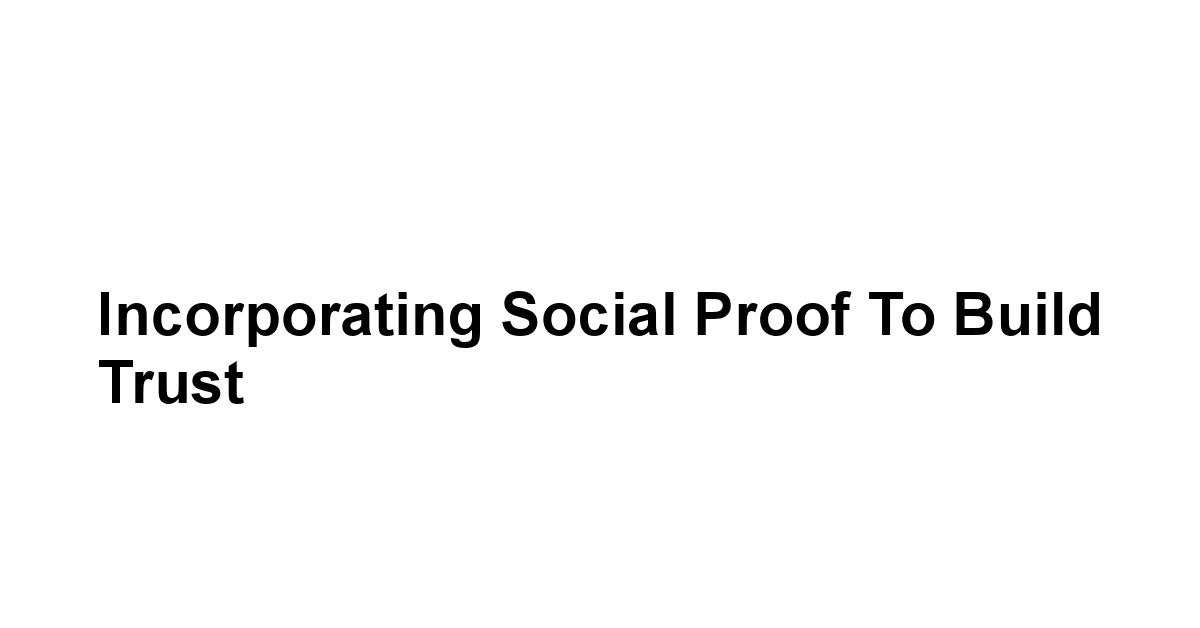
In the world of sales copy, social proof is like a warm hug from a trusted friend.
It assures your audience that others have shared their journey, supporting your claims and adding credibility.
When potential customers see that others deem your product valuable, they’re more likely to trust you and take action!
Social proof can come in many forms, from testimonials to user-generated content, and it’s far more powerful than you might realize.
Types of Testimonials That Work Wonders
Testimonials can be a fantastic way to showcase the effectiveness of your product or service.
Different types of testimonials resonate with diverse audiences.
Here are some popular testimonial formats you might consider:
-
Written Testimonials: Simple quotes or short paragraphs from satisfied customers can effectively communicate the value of your product. For example, “This product transformed my business! I can’t recommend it enough!” is a powerful quote.
-
Video Testimonials: Seeing and hearing customers express their excitement brings authenticity to your claims. You can feature satisfied customers discussing their experiences directly on your website.
-
Case Studies: Share success stories in-depth, showcasing how your product solved real problems for clients. This is a great way to build relatability and establish credibility.
When incorporating testimonials into your sales copy, ensure they are relevant and reflect genuine customer experiences.
Authenticity is key—genuine voices will resonate more strongly than generic praise!
The Role of Reviews and User-Generated Content
When potential customers stumble upon reviews and ratings from people like them, it can make all the difference in choosing whether or not to buy.
Here’s how you can leverage reviews and UGC effectively:
-
Showcase Quality Ratings: If you have a solid rating on platforms like Trustpilot or Yelp, don’t hesitate to flaunt it! “Rated 4.9 stars by 500+ happy users!” builds immediate credibility.
-
Encourage Customers to Share: Cultivating a community of happy customers who voluntarily share their experiences can work wonders. A simple call to action, like “Share your thoughts with us on Instagram using #myproductstory” can yield fantastic results.
-
Feature Customer Photos and Stories: Seeing real-life experiences with your product helps prospective customers visualize how they fit your offer into their lives.
Incorporating reviews and user-generated content into your sales copy allows potential customers to feel a sense of trust and familiarity.
This, in turn, lays the groundwork for building authentic connections with them!
Showcasing Trust Badges and Endorsements
Trust badges and endorsements are like the cherry on top of your sales copy sundae.
Whether it’s a badge from a known organization, awards won, or affiliations with reputable entities, showcasing these elements reinforces your credibility!
Here’s how to utilize trust badges effectively:
-
Display Relevant Certifications: If your product has earned certifications or accolades, make them prominent on your website. Showcase badges like “Certified Organic” or “Best in Class 2023.”
-
Highlight Media Mentions: If your product has been featured in prestigious publications, don’t shy away from showcasing this! “As featured in Forbes” asserts credibility that can sway hesitant customers.
-
Include Security Badges: In e-commerce, reassuring customers that their payment information is secure is crucial. Incorporate security icons like SSL certificates or payment processors like PayPal to eliminate fear.
Building trust is an essential element in sales copy.
The more trustworthy your message appears, the more likely you’ll see conversions!
Creating a Strong Call to Action That Converts
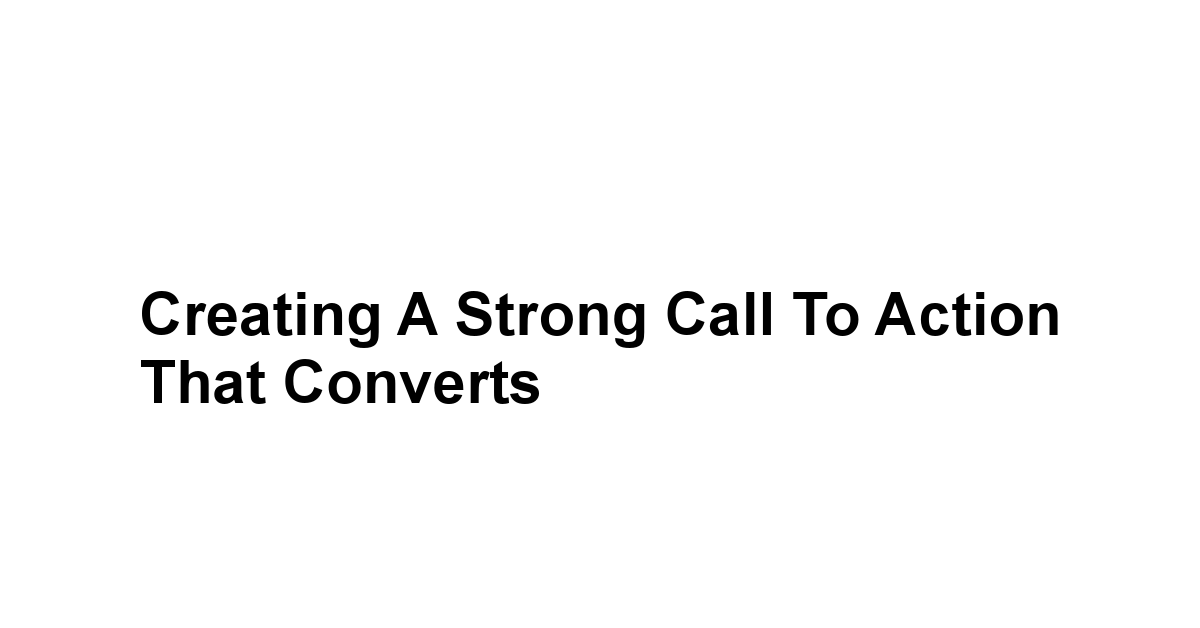
Alright, my friend, we’ve reached the closing act! The Call to Action CTA is the grand finale, the crescendo of your sales copy! It’s your chance to guide readers towards the next step, so it’s essential to craft a memorable and compelling CTA that converts.
The CTA is more than a simple button or line of text; it’s the vital ingredient encouraging readers to take action.
Whether that means signing up, making a purchase, or downloading a resource, let’s ensure it’s hard to resist!
Different Types of CTAs and When to Use Them
CTAs come in various flavors, each suited for different scenarios.
Knowing which type to incorporate will help you resonate with your audience and prompt the desired action!
Here are some popular types of CTAs:
-
Direct Purchase CTAs: Phrases like “Buy Now” or “Shop the Collection” are clear calls for those ready to dive in with a purchase.
-
Subscription CTAs: Engage visitors with CTAs like “Join Our Newsletter for Exclusive Offers” to build your email list and nurture leads.
-
Free Resource CTAs: Inviting folks to access a free trial or downloadable content like “Get Your Free eBook Today!” is an enticing way to start a relationship.
Choosing the right type of CTA depends on the stage your reader is in.
Tailor these calls to action based on your audience’s needs and behaviors, and watch the conversion rates soar!
Making Your CTA Stand Out on the Page
You want your CTA to pop, right? It should be like a bright sunflower in a field of wildflowers—unmissable! Employing design techniques to ensure your CTA grabs attention is crucial for prompting users to take that next step.
Here’s how to make your CTA truly stand out:
-
Utilize Bold Colors: Create contrast with vibrant colors to make your CTAs more eye-catching. A bright orange or green button can provide a striking contrast against darker backgrounds, drawing attention.
-
Employ Whitespace: Getting rid of clutter around your CTA can enhance visibility. A clean, spacious design directs the reader’s focus toward the desired action.
-
Use Action-Oriented Language: Words that evoke action, curiosity, or excitement make a difference! Phrases like “Discover Your Savings” or “Unlock Your Free Trial” can entice readers to engage.
Being intentional about your design choices ensures your CTA doesn’t fade into the background.
Let it shine brightly and encourage your audience to take action!
The Power of Action-Oriented Language
Action-oriented language moves the reader from passive to active participation.
It uses trigger words that ignite excitement, urging them to take that leap to act!
Here are some tips for crafting action-oriented language:
-
Use Verbs That Inspire Action: “Claim,” “Transform,” “Unlock,” and “Achieve” are examples of verbs that incite a sense of urgency and excitement.
-
Keep It Brief: Short, snappy phrases like “Get Started Today!” convey immediacy and clarity without overwhelming readers.
-
Craft a Sense of Belonging: Statements like “Join Our Community of Happy Customers” evoke a feeling of belonging and encourage action.
When you harness the power of action-oriented language in your CTAs, you’re shaping an irresistible invitation for readers! Help them see how satisfying it will be to take that next step!
Optimizing Your Sales Copy for SEO and Readability
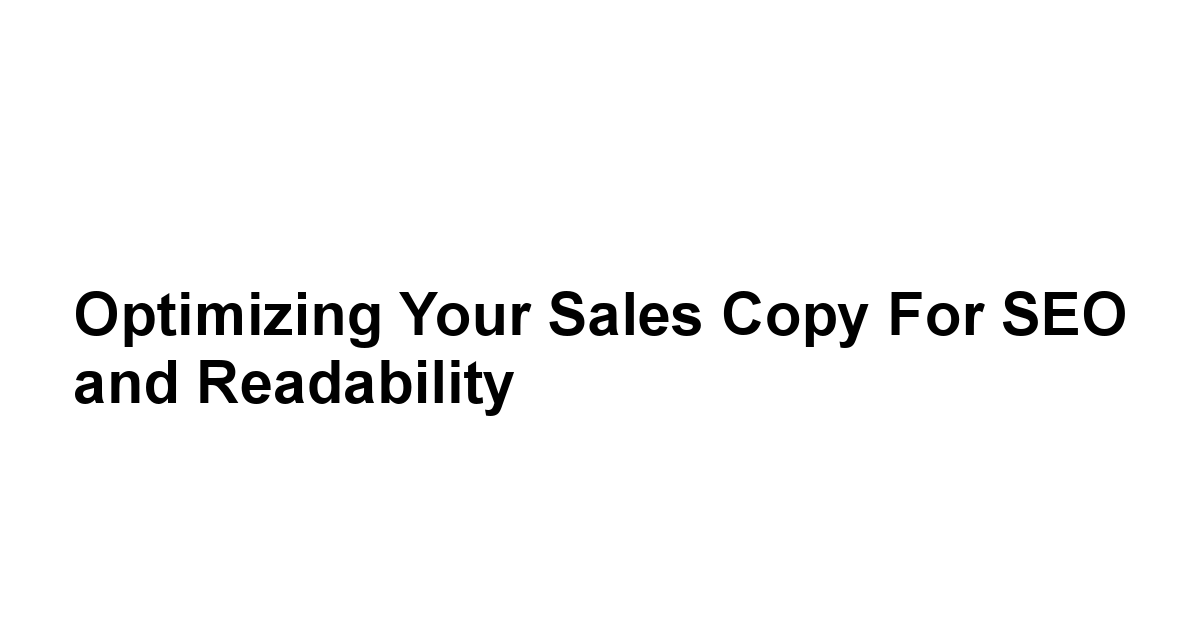
Now that you’ve crafted captivating sales copy, it’s essential to ensure it can be easily discovered and read by your audience.
SEO can significantly enhance the visibility of your sales copy, while readability keeps users engaged.
It’s the perfect balance between getting found and being understood!
Keyword Integration Without Sacrificing Flow
Seamlessly integrating keywords into your sales copy is essential for elevating its SEO visibility.
However, it must feel natural so it doesn’t disrupt the flow of your writing.
Consider the following keyword integration strategies:
-
Focus on Long-Tail Keywords: Use specific phrases that reflect your audience’s search intent. For example, “how to write sales copy that drives clicks” is more effective than general phrases.
-
Strategically Place Keywords: Include keywords in your headers and throughout your content, especially in the introduction and conclusion, fitting them in cohesively while maintaining readability.
-
Avoid Keyword Stuffing: This can harm readability and SEO ranking. Aim for a natural incorporation of keywords, ensuring they fit seamlessly into sentences.
By achieving that delicate balance, your sales copy becomes both searchable and engaging.
Get ready to rise through the search rankings while delighting your readers!
Importance of Formatting for Scannability
Proper formatting enhances scannability and allows readers to easily identify key points, making it more accessible.
Here’s how to enhance formatting for scannability:
-
Break Up Text with Headings and Subheadings: This makes it easier for readers to navigate your copy. A well-organized structure allows for quick identification of sections and key information.
-
Utilize Bullet Points and Numbered Lists: These are effective for breaking down information into digestible chunks. They enhance readability and improve information retention.
-
Incorporate Visuals: Utilize images, diagrams, or infographics to support your written content. Visuals not only break up the text but also enhance understanding.
With thoughtful formatting, your sales copy won’t just be read—it will be engaged with! The easier it is for readers to navigate, the more likely they’ll feel encouraged to take action.
Tools to Enhance Readability and Engagement
Utilizing tools that enhance readability can be a phenomenal way to improve your sales copy! There are numerous resources available to refine your writing and boost engagement.
Here’s a list of tools you might find useful:
- Grammarly: This handy tool not
only checks grammar but offers readability scores and clarity suggestions to refine your content until it shines!
-
Hemingway Editor: This tool helps you gauge the readability of your writing and suggests changes to make your sentences more concise and impactful.
-
Canva: Use it to create eye-catching visuals that complement your text, making your sales copy not only more engaging but visually appealing as well.
Arming yourself with the right tools adds another layer of finesse to your sales copy.
You’ll have that added confidence to present your message in the best possible light!
Testing and Refining Your Sales Copy for Better Results
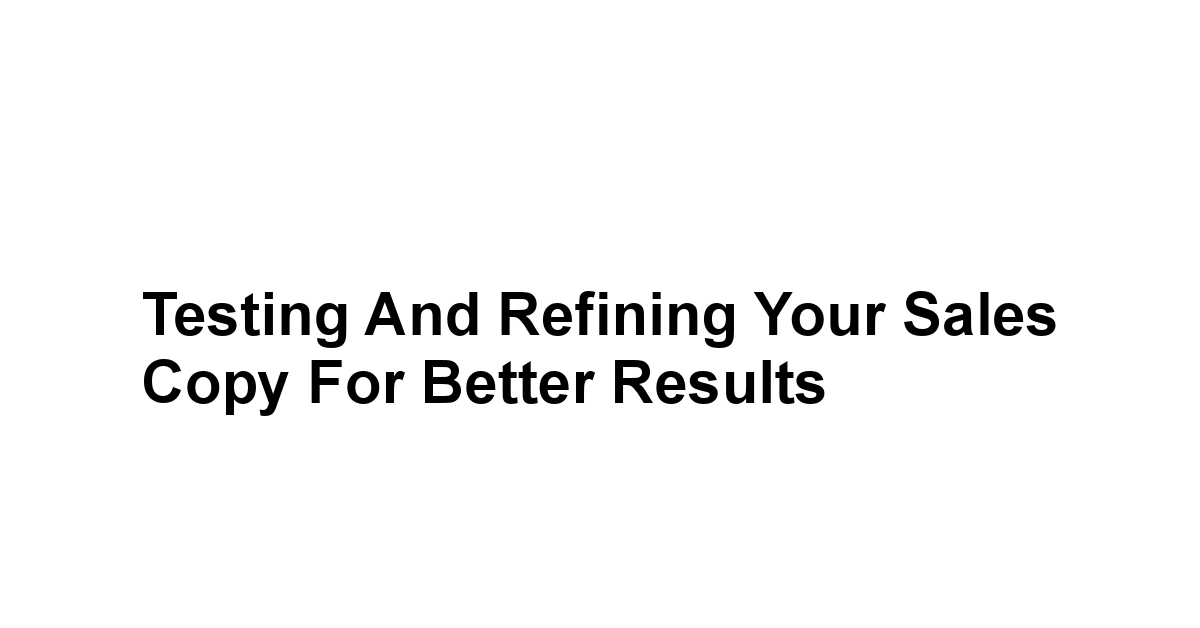
Congratulations! You’ve crafted some impressive sales copy, but the journey doesn’t end there! This is just the beginning, my friend.
Testing and refining your sales copy is crucial for maximizing your results and conversions.
Implementing systematic A/B testing, collecting feedback, and continuously improving your content allows you to adapt and optimize your sales copy based on what works best for your audience.
The Value of A/B Testing for Headlines
A/B testing is your best friend when it comes to refining your sales copy! It involves creating two variations of a particular element like a headline or CTA and testing them against each other to identify which performs better.
Here’s how to conduct successful A/B testing:
-
Determine What to Test: Start small! Focus on one element at a time, like your headline or CTA button text, so you can accurately assess the impact.
-
Segment Your Audience: Split your audience into two groups to ensure equal exposure to the variations of your copy. This maintains the integrity of the test.
-
Analyze the Results: Collect data on metrics like click-through rates and conversions. This helps you identify which variant resonates best with your audience.
With A/B testing, you can continuously uncover insights that enhance your sales copy, making it more persuasive and effective over time!
Collecting and Analyzing Feedback
Feedback is the secret ingredient in the recipe for improvement.
Incorporating insights from customers and stakeholders can broaden your perspective and enhance your sales copy significantly.
Consider these strategies for collecting and analyzing feedback:
-
Surveys and Polls: After a purchase, send out surveys asking for feedback on your messaging. Questions could include “What prompted your decision to buy?” or “What do you wish was included in our copy?”
-
Engagement Metrics: Monitor metrics like time on page, bounce rates, and conversion rates. These analytics can provide invaluable insights into how your audience interacts with your content.
-
Peer Reviews: Sharing your copy with trusted colleagues or mentors can lead to fresh perspectives. Their constructive criticism can refine your writing even further.
Engaging in an iterative process allows you to continuously adapt and grow your sales copy into an even more powerful tool!
Continuous Improvement: The Path to Excellence
Continuously improving your sales copy isn’t just helpful—it’s essential!
Here’s how to embrace continuous improvement throughout your copywriting journey:
-
Review Performance Regularly: Consistently analyze your sales copy for effectiveness and keep pace with changing customer behaviors. This might mean tweaking your copy based on seasonal trends or shifting audience needs.
-
Invest in Courses or Workshops: Seek opportunities to hone your skills! Whether it’s an online course, webinar, or workshop, learning from experts can provide you with new tools and insights.
Embracing continuous improvement will place you head and shoulders above the competition.
Make it your mission to refine your craft, and you’ll unlock limitless possibilities for your sales copy’s success!
The Role of Visual Elements in Boosting Engagement

In today’s visually driven world, the right images, infographics, and videos can electrify your sales copy! Visual elements have the power to captivate attention, evoke emotions, and enhance understanding.
Incorporating them judiciously transforms your sales copy into a rich, engaging experience.
An irresistible blend of text and visuals keeps readers enthralled by guiding them through the sales copy and reinforcing your messages.
Let’s explore how to optimize visuals for maximum impact!
Choosing Images That Complement Your Copy
Selecting the right images can make all the difference in elevating your sales copy.
Images should resonate with your message and enhance the overall content experience.
Consider these tips for choosing impactful images:
-
Align with Your Brand: Ensure images reflect your brand’s personality and values. If your brand is playful, use fun images. If it’s serious, opt for professional, clean visuals.
-
Use High-Quality Images: Low-resolution images can be off-putting. Invest in quality photography or illustrations to present a polished image to your audience.
-
Incorporate Lifestyle Shots: Lifestyle images showing your product in action breathe life into your copy. For instance, depicting a family enjoying a meal together with your cooking product can resonate more deeply.
Thoughtful imagery can evoke emotions, entice readers, and support your sales copy’s messages in a way that words alone may not achieve.
The Impact of Infographics on Understanding
Infographics are fabulous tools for communicating complex information engagingly and accessibly.
They combine visuals and text to convey messages effectively and are perfect for breaking down data-heavy content.
Consider these tips for leveraging infographics:
-
Simplify Data: Infographics allow readers to easily grasp complex data. Instead of drowning your audience in numbers, use charts or graphs to illustrate key points clearly.
-
Visual Flow: Infographics should guide readers through the content intuitively. Use arrows or pathways to establish a logical flow of information.
-
Brand It: Ensure your infographics include your branding, including logos and color schemes. This reinforces your identity and strengthens recognition.
Incorporating infographics into your sales copy not only boosts visual appeal but enhances understanding, helping readers digest core messages quickly!
Utilizing Video Content to Enhance Your Message
Incorporating video into your sales copy can lead to increased engagement and foster connections with your audience! Videos can showcase products, share customer testimonials, or tell your brand story in a dynamic way.
Here’s how to make the most of video content:
-
Keep it Short and Impactful: Attention spans are short! Aim for quick videos or highlight reels that encapsulate your message within 1-2 minutes.
-
Focus on Quality: Invest in quality production to give your videos a polished and professional feel. Great visual and audio quality make a difference in audience perception.
-
Direct Readers to Your CTA: Don’t forget to include a call-to-action at the end of your video. Prompt viewers on what steps to take next, linking back to your sales copy or product page.
Video content adds vibrancy and depth, making your sales copy more engaging and persuasive.
Leveraging this dynamic medium can enhance your connection with readers in unforgettable ways!
The Benefits of Staying Authentic and Genuine

In a world filled with flashy marketing strategies, authenticity reigns supreme.
Staying genuine in your sales copy is essential; it builds trust, fosters loyalty, and creates connections that can last a lifetime.
Your audience can sense insincerity a mile away, so it’s crucial to keep your messaging real, relatable, and honest.
By staying authentic, you’ll win over hearts and minds, leading to higher engagement and better conversion rates!
Communicating Your Brand’s Personality
Every brand has its unique personality—don’t be afraid to showcase yours in your sales copy! Infusing personality into your writing humanizes your brand and makes it relatable to your audience.
Here’s how to communicate your brand’s personality effectively:
-
Identify Your Voice: Determine whether your brand voice is playful, authoritative, or compassionate, and reflect that tone consistently throughout your copy.
-
Be Transparent: Share your brand’s journey, values, and mission. A story of how your brand was born and what it stands for resonates with customers.
-
Engage Authentically: Encourage dialogue! Respond to comments, answer questions, and engage with your audience genuinely—this deepens connections.
Authentic communication builds credibility, inviting your audience to not only see but feel your brand, fostering loyalty and increasing retention!
Building Long-lasting Relationships Through Honesty
Honesty is not just a trait; it’s a powerful marketing strategy! Building long-lasting relationships with your customers requires transparent communication and genuine interactions.
To cultivate honesty in your sales copy:
-
Be Open About Limitations: If your product has downsides, address them upfront. Perfection is unrealistic, and customers appreciate transparency.
-
Share Real Successes and Failures: Don’t just showcase your successes; share stories of challenges overcome. Doing so adds depth to your brand and evokes relatability.
-
Encourage Feedback and Adapt: Allow your customers to share opinions and reviews openly. Use this feedback to adapt and improve future offerings.
Honesty enriches the customer experience, forming lasting connections that turn one-time buyers into loyal brand advocates.
That’s what we’re striving for!
Emphasizing Transparency for Customer Loyalty
Transparency is the cornerstone of customer loyalty.
When customers feel informed and valued, they’re likely to continue engaging with your brand for years to come!
Here’s how to maintain transparency effectively:
-
Communicate Clearly: Keep lines of communication open and provide updates on policies, changes, or relevant information affecting customers.
-
Showcase Authentic Experiences: Share behind-the-scenes content or stories from employees and customers to create authenticity and a sense of belonging to the brand community.
-
Honor Your Commitments: If you promise certain benefits or quality, ensure you deliver! Following through on promises cultivates trust and encourages ongoing support.
Instilling transparency builds an emotional bond between you and your audience.
This bond translates into brand loyalty and repeat customers, paving the way for sustained growth!
Final Verdict
Understanding your audience is less about complex marketing strategies and more about building genuine connections.
Throughout this journey, you’ve seen how essential it is to tap into the desires, pain points, and motivations of your readers.
When your potential customers feel seen and understood, they’re not just passive observers—they become eager participants in your narrative.
Remember, empathy is your strongest ally; by letting your audience know you are fully aware of their struggles, you can create a compelling sales copy that speaks directly to their hearts.
It’s clear that crafting personas and humanizing your brand resonate in a big way.
Statistics indicate that businesses operating with detailed buyer personas can boost their marketing effectiveness by over 77%! So, taking the time to create insightful customer personas can lead to content that isn’t just more effective but downright transformative.
Picture your content as a friendly conversation rather than a monotonous sales pitch.
It’s about being relatable, engaging, and trustworthy, which fosters loyalty and promotes the kind of brand relationships that turn customers into advocates.
Moreover, the fundamentals of captivating headlines and solid calls to action cannot be overstated.
You’ve seen that a staggering 80% of readers won’t click past the headline.
Bringing that same energy into your CTAs—making them bright, action-oriented, and persuasive—will ensure you’re not just attracting attention but also driving it to conversion.
Your sales copy should feel less like an attempt to convince and more like an irresistible invitation to embark on a shared journey.
That could mean discovering new joys or solutions with your product or service.
Finally, embracing continuous improvement through feedback and A/B testing will allow you to fine-tune your message over time.
By staying open to feedback and insights, you can adapt your approach, ensuring your message remains relevant and resonant.
So keep learning, keep testing, and above all, stay authentic.
The more genuine you are, the more your audience will connect, trust, and engage with your brand.
In the end, it’s all about creating a community—one piece of sales copy at a time!

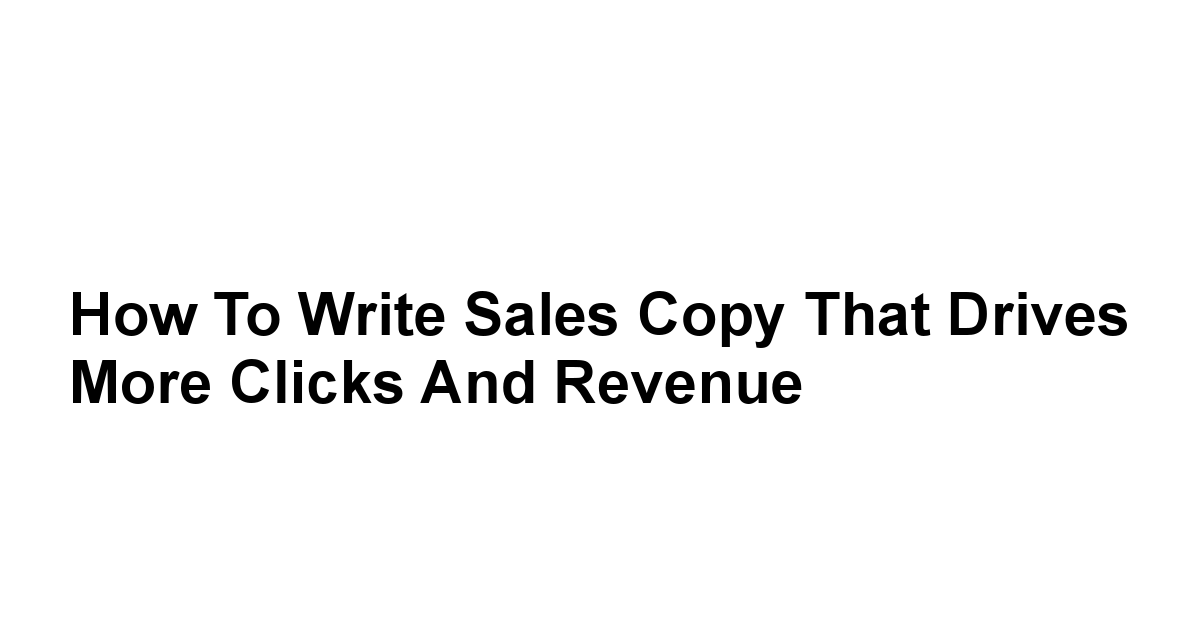
Leave a Reply